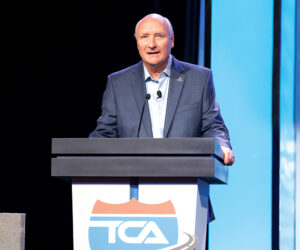Fiddling can be good.
Fiddling refers to the act of playing the fiddle, and fiddlers are musicians who play it.
Fiddling is a colloquial term for the violin, used by players in all genres including classical music. Violins are more closely associated with orchestral music; a “fiddle” is more closely associated with folk music.
Fiddling can be associated with something positive, such as enjoyment of music.
On the other hand, fiddling around with a cell phone often results in a negative outcome.
Based on the number of Virginia drivers who were observed as part of a 2018 Insurance Institute for Highway Safety (IIHS) roadside survey, drivers last year were 57 percent more likely to be manipulating a cellphone than drivers who were observed in a similar 2014 survey.
The percentage of drivers observed using a smartphone rose from 2.3 percent in 2014 to 3.4 percent in 2018, the IIHS said.
At the same time, drivers were less likely to be seen simply holding a cellphone or talking on a hand-held phone than in the prior survey. The finding is consistent with research indicating that drivers are talking on hand-held phones less and “fiddling” with them more often than in recent years.
In 2018, 3.7 percent of drivers in northern Virginia were observed talking on a hand-held cellphone, compared with 4.1 percent of drivers in 2014, while 2.8 percent of drivers in 2018 were seen holding a cellphone, compared with 4.9 percent in the prior survey.
The problem of distracted driving, especially cellphone use, continues to raise concerns, the IIHS said.
A 2018 national survey by the AAA Foundation for Traffic Safety found that 64 percent of respondents consider distracted driving a much bigger problem today than it was three years ago.
About 37,000 people died in motor vehicle crashes in 2017, the most recent year of data available. Assuming the prevalence of phone manipulation nationwide rose as it did in northern Virginia to 3.4 percent, and assuming, based on the latest research, that fatal crash risk is 66 percent higher when manipulating a phone, then more than 800 of the estimated crash deaths in 2017 could be attributed to phone manipulation.
This estimate is based on work by IIHS and other researchers describing how the estimated risk and prevalence of phone use can be combined to estimate the number of crash deaths that could be attributed to phone use in a given year.
The 66 percent increase in fatal crash risk associated with manipulating a cellphone relative to driving when other secondary behaviors were present is a finding of a 2018 study by the AAA Foundation for Traffic Safety and the Virginia Tech Transportation Institute.
“The latest data suggest that drivers are using their phones in riskier ways,” said David Kidd, who co-authored the study and is a senior research scientist with Highway Loss Data Institute. “The observed shift in phone use is concerning because studies consistently link manipulating a cellphone while driving to increased crash risk.”
Cellphone use affects how drivers scan and process information from the roadway, the IIHS study said.
Drivers generally take their eyes off the road to dial, send texts and browse the Web on a hand-held phone — all activities that fall under the rubric of manipulating the phone. Drivers engaged in cellphone conversations tend to concentrate their gaze toward the center of the roadway, but their attention still may be diverted from driving, making it difficult for them to process what they are looking at.
Procedures for the 2018 update followed those used in 2014.
IIHS stationed observers at 12 locations across four northern Virginia communities on straight stretches of roads, at signalized intersections and at roundabouts in March 2018.
Observers noted nearly 12,000 drivers in the 2018 survey and more than 14,000 drivers in 2014 during the morning, afternoon or early evening on weekdays. Researchers noted if drivers were engaging in one or more of 12 visible secondary behaviors while moving or stopped at red lights.
About 23 percent of drivers were engaged in one or more distracting activities:
- Talking on a hand-held cellphone
- Manipulating hand-held cellphone (excludes looking at phone in mount)
- Simply holding a hand-held cellphone (i.e. not obviously manipulating or talking)
- Wearing a Bluetooth earpiece or headset with mic
- Wearing headphones or ear buds
- Manipulating in-vehicle systems (touching radio, climate control, touchscreen display or other controls (excludes operating stalks or buttons on the steering wheel)
- Manipulating or holding a mobile electronic device other than cellphone
- Talking or singing
- Eating or drinking
- Smoking
- Grooming
- Other (reaching for object, reading print material, adjusting sun visor, putting on glasses, holding another object).
Bottom line: Fiddle only to make music
Lyndon Finney’s publishing career spans over 55 years beginning with a reporter position with the Southwest Times Record in Fort Smith, Arkansas, in 1965. Since then he’s been a newspaper editor at the Southwest Times Record, served five years as assistant managing editor of the Arkansas Democrat-Gazette in Little Rock and from November 2004 through December 2019 served as editor of The Trucker. Between newspaper jobs he spent 14 years as director of communications at Baptist Health, Arkansas’ largest healthcare system. In addition to his publishing career he served for 46 years as organist at Little Rock’s largest Baptist church.








